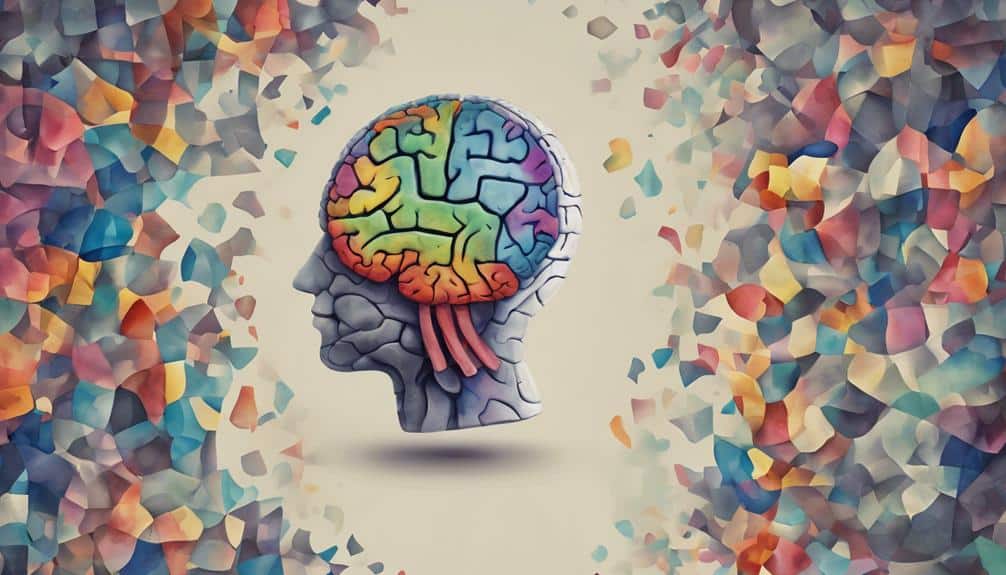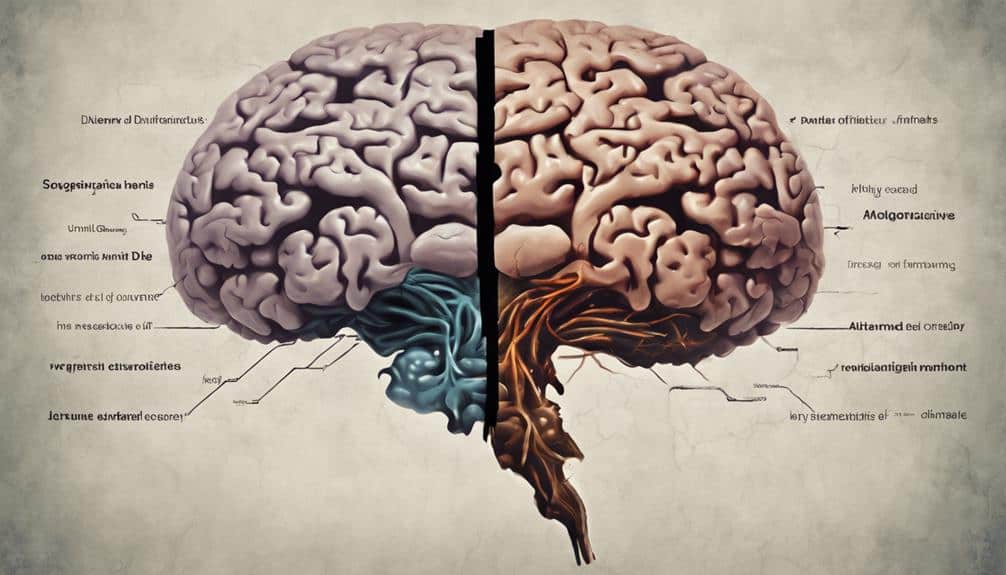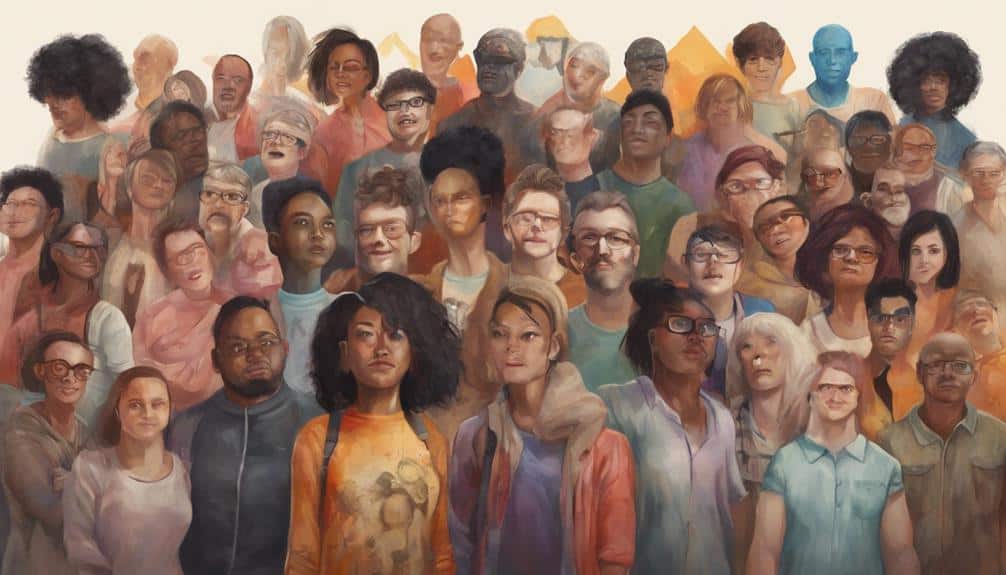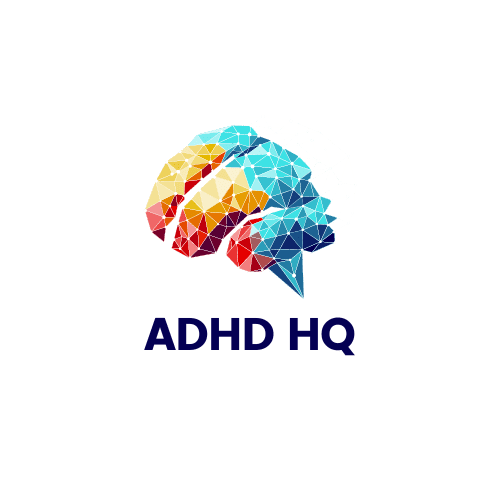Is Did Neurodivergent
As a writer delving into the domain of neurodiversity, it's fascinating to note that approximately 1-3% of the global population may experience Dissociative Identity Disorder (DID), a condition often shrouded in mystery and misconceptions.
The intersection of DID and neurodivergence raises thought-provoking questions about the classification and understanding of this complex condition. Could DID be considered neurodivergent, and if so, what implications does this recognition hold for individuals living with DID and the broader neurodiversity movement?
The evolving conversation surrounding this topic invites us to reconsider our perceptions and explore the intricate relationship between DID and neurodivergence.
Key Takeaways
- DID, with its distinct alters and unique traits, falls under the umbrella of neurodivergence.
- Alters in DID embody diverse neurodivergent identities, highlighting the complexity of neurodivergence.
- Understanding DID as a form of neurodivergence fosters inclusivity and acceptance in mental health communities.
- The interplay between neurodivergence and alters in DID underscores the need for tailored support and recognition.
Exploring the Nature of DID

Exploring the nature of DID reveals the intricate interplay of identities and experiences within individuals affected by this neurodivergent condition. Living with Dissociative Identity Disorder means maneuvering a complex internal landscape where distinct alters coexist, each with its unique traits, memories, and responses. This neurodivergent condition manifests as a coping mechanism in response to severe trauma, especially during formative years. The development of different identities serves as a protective shield, shielding the individual from overwhelming experiences by compartmentalizing aspects of self.
Witnessing the diverse identities within a person with DID can be both fascinating and challenging. These alters can differ in age, gender, speech patterns, and even physical health conditions, highlighting the multifaceted nature of this condition. Supporting individuals with DID entails acknowledging and respecting the intricacies of their internal world, understanding the barriers they face in memory recall and identity integration due to the neurodivergent aspects of their condition.
Neurodivergence in Dissociative Identity Disorder

Having multiple alters in Dissociative Identity Disorder (DID) can profoundly impact one's sense of self and daily functioning.
This identity fragmentation showcases the neurodivergent nature of DID, where each alter embodies unique traits and characteristics.
Understanding the complex interplay between neurodivergence and alters in DID is essential for providing tailored support and fostering acceptance within the neurodivergent community.
Identity Fragmentation Impact
Exploring the impact of identity fragmentation in Dissociative Identity Disorder (DID) involves understanding the intricate neurodivergent experiences that shape individuals with this condition. Neurodivergence in DID leads to a fragmented sense of self, where distinct identities may surface in response to trauma, affecting emotional responses and cognitive processes.
The complexity of identity fragmentation in DID can manifest in various ways, such as gaps in memory or shifts in behavior between identities. This neurodivergent aspect of DID underscores the importance of tailored support and interventions to address the unique needs of individuals grappling with the challenges posed by fragmented identities.
- Fragmented identities can have unique traits, memories, and behaviors.
- Gaps in memory and changes in handwriting may occur.
- Different identities may exhibit distinct shifts in behavior.
- Trauma can trigger the emergence of various identities.
Neurodivergence and Alters
The intricate neurodivergent experiences shaping individuals with Dissociative Identity Disorder (DID) extend to the unique traits and responses exhibited by alters within one's internal system. Alters in DID represent a diverse array of neurodivergent identities, each with distinct characteristics. These alters may showcase varying cognitive abilities, preferences, and behaviors, reflecting the complexity of neurodivergence within the individual's mind.
It's common for alters to embody different neurodivergent conditions like ADHD, autism, or dyslexia, further emphasizing the diverse nature of neurodivergence in DID. Understanding and acknowledging the neurodivergent aspects of alters is important for providing personalized support and accommodations tailored to the specific needs of each identity within the system. By recognizing and embracing this diversity, we can create a more inclusive and supportive environment for individuals with DID and their alters.
Debating the Classification of DID

Engaging in discussions about the classification of Dissociative Identity Disorder (DID) within the domain of neurodiversity brings to light nuanced perspectives and considerations. When debating whether DID should be classified under neurodiversity, various viewpoints emerge, each with valid points to contemplate:
- Some argue that DID falls under neurodiversity as it represents a unique cognitive experience.
- Others question if DID truly aligns with the traditional neurodiversity framework due to its complex nature.
- The classification of DID within neurodiversity underscores the importance of recognizing diverse cognitive processes.
- Understanding DID as a form of mental illness while also acknowledging its distinct characteristics is essential for providing appropriate support and validation.
These discussions highlight the importance of approaching the classification of DID with an open mind, recognizing the complexities of neurodiversity and mental health conditions within a framework of empathy and understanding.
Understanding DID as a Neurodivergent Condition

As we explore the concept of neurodiversity within Dissociative Identity Disorder (DID), it's crucial to acknowledge the unique brain processing and cognitive differences that individuals with DID experience.
Understanding DID as a neurodivergent condition allows us to appreciate the diverse strengths and challenges that come with this disorder, emphasizing the importance of inclusivity and support.
Neurodiversity in DID
Considering the intricate variations in brain functioning and cognitive processes, it becomes evident that DID is inherently a neurodivergent condition. In individuals with DID, the neurodiversity aspect manifests in diverse ways, shaping their experiences and behaviors.
- Variations in Identity: Different identities within one individual
- Memory Discrepancies: Amnesia and memory gaps between identities
- Perception Differences: Altered states of consciousness
- Unique Cognitive Experiences: Diverse ways the brain processes information
Recognizing the neurodiversity in DID underscores the importance of accommodating and supporting individuals with the disorder. By acknowledging the cognitive differences and complexities inherent in DID, we can foster a more inclusive and empathetic environment for those affected by this condition.
Stigma and DID
Understanding DID as a neurodivergent condition sheds light on the stigma and misconceptions individuals with this complex disorder face, fostering empathy and support.
Stigma surrounding DID can lead to discrimination, disbelief, and social isolation for those living with this condition. Similar to other neurodivergent conditions, such as autism and ADHD, individuals with DID often encounter misunderstandings and judgment from society. This stigma contributes to the challenges of seeking help, receiving appropriate treatment, and feeling accepted.
Perspectives on DID and Neurodiversity

How does Dissociative Identity Disorder (DID) intersect with the concept of neurodiversity? DID, as a complex mental health disorder characterized by distinct identities or personality states, raises questions about its relationship to neurodiversity, which typically encompasses cognitive variations like Autism and ADHD.
Here are some key points to contemplate:
- DID is distinct from neurodiversity: While neurodiversity covers conditions with brain function differences, DID is primarily associated with trauma-induced dissociation and identity fragmentation.
- Importance of accurate representation: Understanding the differences between DID and neurodiversity is pivotal for fostering support and awareness within both the mental health and neurodivergent communities.
- Trauma and dissociation: DID often stems from trauma, highlighting the need for nuanced discussions around how trauma affects neurodivergent individuals.
- Intersectionality: Recognizing the complexities of DID within the broader context of neurodiversity can lead to more thorough and inclusive support systems for individuals moving through these experiences.
Implications of Recognizing DID as Neurodivergent

Recognizing DID as neurodivergent sheds light on the diverse cognitive experiences of individuals grappling with this complex disorder. Understanding DID as a form of neurodivergence is essential for promoting inclusivity and acceptance among neurodivergent people.
By acknowledging the unique brain processing and variations in individuals with DID, we can create a more supportive and understanding environment for those living with the condition. Viewing DID through a neurodiversity lens emphasizes the importance of inclusion, support, and awareness within the community.
It highlights the necessity for tailored approaches and resources to help neurodivergent individuals manage their symptoms effectively. Embracing DID as a neurodivergent condition encourages education, empathy, and destigmatization surrounding the disorder.
Frequently Asked Questions
Is Dissociative Identity Disorder a Neurodivergent?
Having Dissociative Identity means existing with distinct parts within me. This condition, known as DID, falls under the neurodivergent classification. It shapes my brain's functions and behaviors uniquely, showcasing the diversity in cognitive experiences.
Are You Neurodivergent if You Have a Personality Disorder?
Having a personality disorder doesn't automatically make me neurodivergent. Neurodivergent traits like Autism and ADHD are distinct from personality disorders. Understanding these differences helps tailor support for individuals with various needs and challenges effectively.
What Falls Under Neurodivergent?
Autism spectrum and ADHD traits are common under neurodivergence. People with varied cognitive profiles encompass conditions like dyslexia, dyspraxia, Tourette's Syndrome, dyscalculia, and more. These differences contribute to our unique perspectives and challenges.
Are Mental Disorders Considered Neurodivergent?
Oh, absolutely! Mental disorders fall under the umbrella of neurodivergence. Embracing neurodiversity acceptance while combating neurodivergent stigma is essential. Understanding that these conditions impact brain function and behavior is key to fostering support and empathy.
Conclusion
As I reflect on the intersection of neurodivergence and Dissociative Identity Disorder, I envision a colorful mosaic of diverse minds coming together. Embracing the complexity of DID as a neurodivergent condition opens doors to understanding, acceptance, and support.
Let's paint a world where differences are celebrated, where unique perspectives shine brightly, and where individuals with DID are empowered to thrive. Together, we can create a vibrant tapestry of neurodiversity, woven with compassion and respect.







